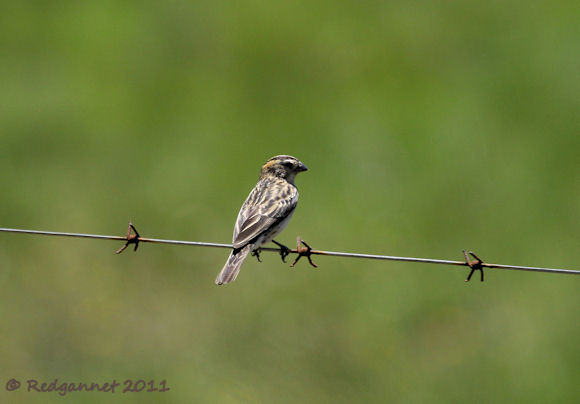In the Kruger National Park is a fantastic game viewing hide
over-looking the excitingly named Lake
Panic (Google Earth ref; 24 58 53S 31 33 58E). It has become known
primarily for its birds, although on the last two occasions I have narrowly
missed Lions and a Leopard. Its proximity to the Paul
Kruger entrance gate and Skakuza Camp have made it especially popular and the
restriction of only 8 cars in the car park at any one time is routinely ignored.
I had chosen to stop here during a very quick visit to the Kruger
NP. Being only 9kms from the Paul Kruger Gate made it easy to time my departure
to be out of the park by the allotted time. The stars of the show today were a
family of Goliath Herons. An adult
bird had been bathing and shook itself dry before having a nap. Meanwhile the
juveniles stood close to the edge of the water, peering in, but at a loss what
to do next.
Eventually the adult bird re-emerged from its roost and
regurgitated some food for its hungry offspring. A more detailed account will
appear on 10,000 Birds soon.
Immediately opposite the thatched hide is a large colony of
weavers. There are two distinct nest shapes in the colony indicating that at
least two species had chosen this site and were able to tolerate each others’
closeness. The majority appeared to be the Village
(Spot-backed) Weaver. The rest of the nests were built with a slight
entrance tunnel descending from the woven sphere. These were the nests of the Southern Masked Weavers.
Very close in, lily pads supported African Jacanas, one of which was playing King of the Castle on a tangle of roots with a Black-necked Crake. Whichever one was currently the ruling monarch seemed determined to increase its defensive capabilities by dragging more weed and root stems onto the mound. Could this have been a prospective nesting site? It did seem rather exposed.
A Grey Heron
stood gazing towards the sun with its wings drooped. My visit almost coincided
with the austral solstice and I was put in mind of a Druid rehearsing for
mid-summer. Close observers might notice the corrugations in the water as a Crocodile slipped silently through the
pool behind the bird.
African Fish Eagles
were calling with their distinctive gull-like shriek. They only came briefly
into view as they came around the corner from the main body of water. Hippos kept their distance, but could
be seen and heard as they rose in the water, occasionally raising a head to
‘yawn’.
As the sun began to set, the hide became busier and busier
with some visitors bringing picnic hampers. A leopard had walked by at about
this time on the previous evening and was said to be a regular visitor to the
area. I wondered if this might have been how Lake Panic had gained its name,
but I am given to understand that it was so called because the engineer who
designed and built the dam that contains the lake had a crisis of confidence
during the first big storm. The Sabie River flooded and filled the lake while
the engineer fretted for a day and a night.
A dead tree in front of the hide was productive for less water-associated
birds. As well as a non-aquatic Brown-hooded
Kingfisher, a couple of Retz’s
Helmet-Shrike stopped in the dead branches. The lake stretches around a corner and out of view beyond
the trees. Along the northern bank Yellow-wattled
Lapwings, White-faced Duck and Egyptian Goose can be seen.
In an attempt to achieve balance and fairness, I should advise you that other hides are available, dotted around the park, but in my limited experience, none so well placed and exciting as Lake Panic.
There are a couple of other posts from this trip and from a previous visit. See the links below;
http://redgannet.blogspot.com/2011/12/dullstroom-grasslands-south-africa-jnb.html
http://redgannet.blogspot.com/2011/12/mount-sheba-south-africa-jnb-december.html
http://redgannet.blogspot.com/2011/12/mount-sheba-re-visited-south-africa.html
http://redgannet.blogspot.com/2011/12/quickly-unto-kruger-south-africa.html
http://redgannet.blogspot.com/2009/10/more-time-i-have-faster-it-goes.html
See the dedicated Africa Page fro other posts on sites accesible from Johanneberg, Cape Town and South Africa
Happy New Year.
Lake Panic, Kruger NP, South Africa,
There is seating for about 20 - 25 people in the ‘L’-shaped
hide, but it is not uncommon to find people standing at the back and even
queuing out through the door, such is its popularity. And its reputation is
justified, so much so that I want to single it out for its own posts, here and
on 10,000 Birds.
Very close in, lily pads supported African Jacanas, one of which was playing King of the Castle on a tangle of roots with a Black-necked Crake. Whichever one was currently the ruling monarch seemed determined to increase its defensive capabilities by dragging more weed and root stems onto the mound. Could this have been a prospective nesting site? It did seem rather exposed.
In an attempt to achieve balance and fairness, I should advise you that other hides are available, dotted around the park, but in my limited experience, none so well placed and exciting as Lake Panic.
There are a couple of other posts from this trip and from a previous visit. See the links below;
http://redgannet.blogspot.com/2011/12/dullstroom-grasslands-south-africa-jnb.html
http://redgannet.blogspot.com/2011/12/mount-sheba-south-africa-jnb-december.html
http://redgannet.blogspot.com/2011/12/mount-sheba-re-visited-south-africa.html
http://redgannet.blogspot.com/2011/12/quickly-unto-kruger-south-africa.html
http://redgannet.blogspot.com/2009/10/more-time-i-have-faster-it-goes.html
See the dedicated Africa Page fro other posts on sites accesible from Johanneberg, Cape Town and South Africa
Happy New Year.




















































